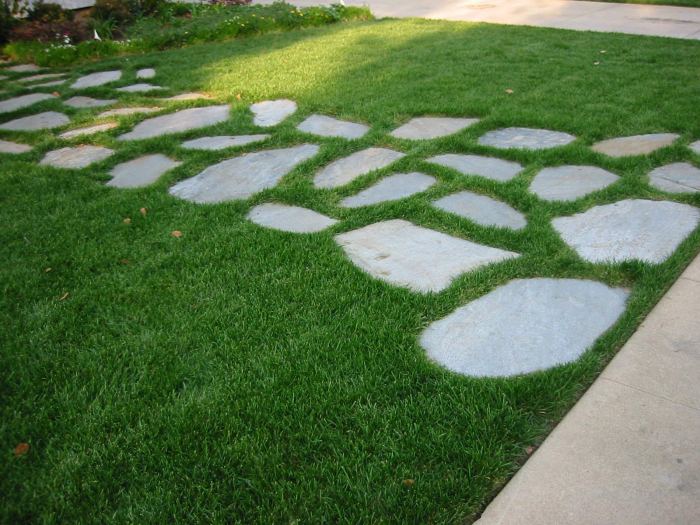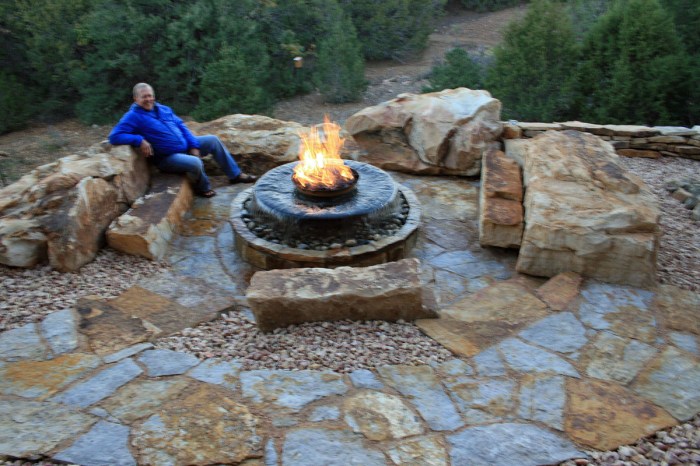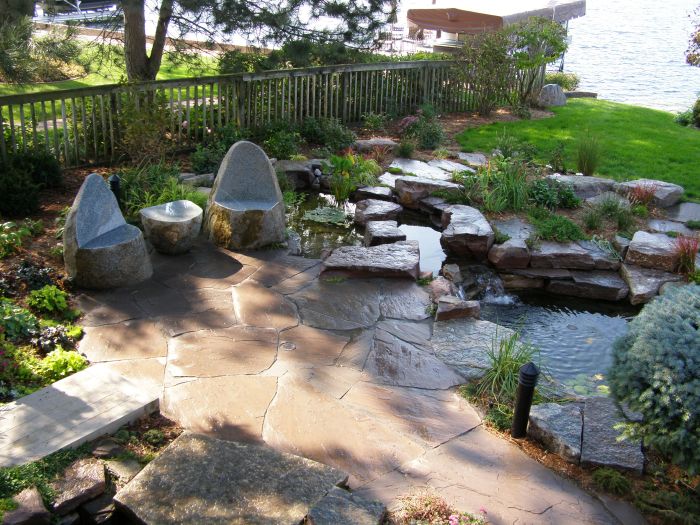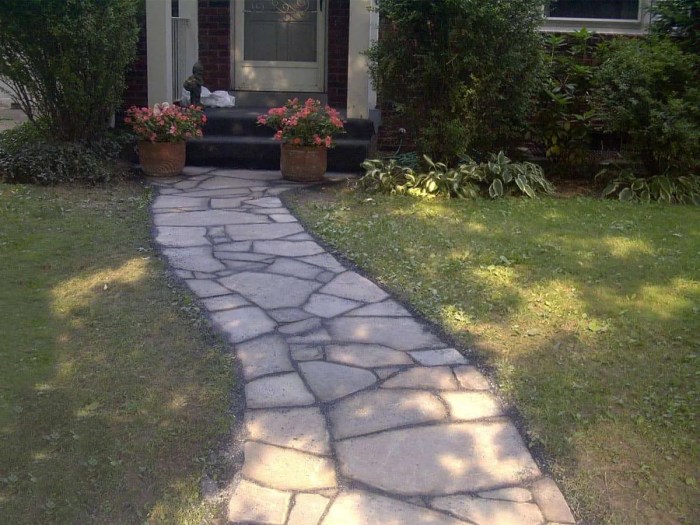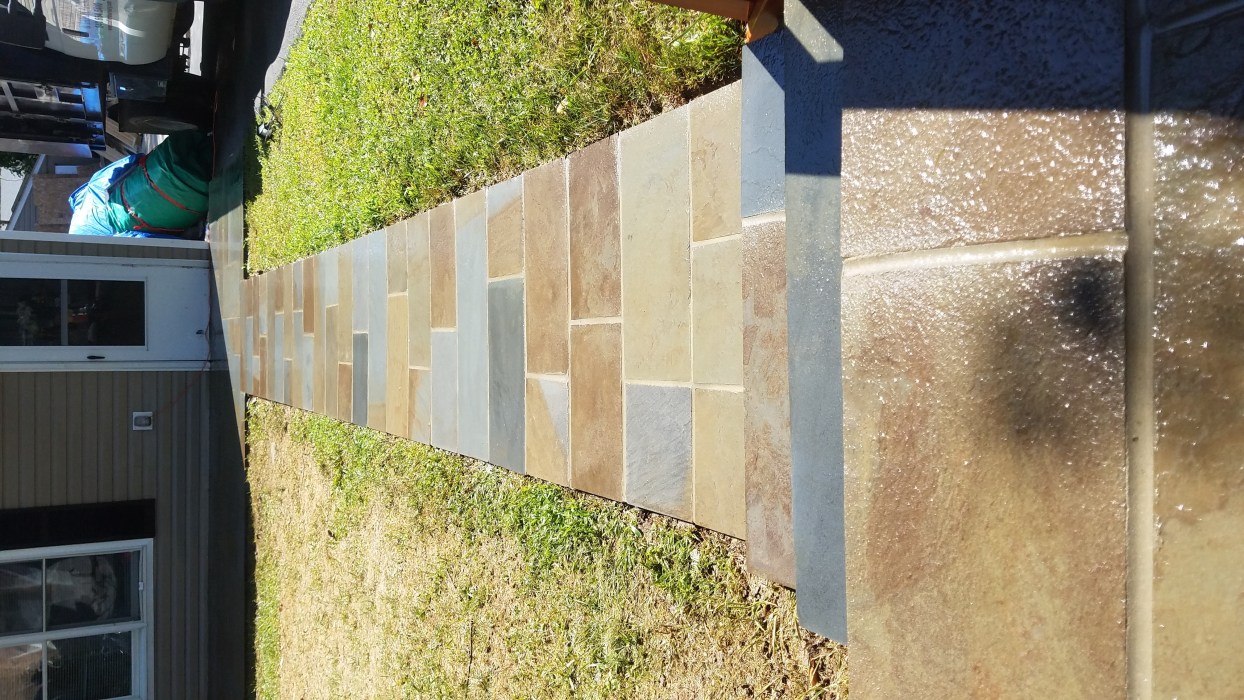Stone for patios and walkways offers a timeless and elegant touch to any outdoor space, creating a durable and visually appealing surface that can transform your backyard into a tranquil oasis. From natural stone options like granite and limestone to engineered stone choices such as concrete pavers and porcelain tiles, the possibilities are endless.
When selecting stone for your patio or walkway, consider factors such as durability, color, and texture. Matching the stone to the surrounding landscape and taking into account the climate and weather conditions in your area will ensure a harmonious and long-lasting installation.
Types of Stone for Patios and Walkways
When selecting stone for patios and walkways, there are two main categories to consider: natural stone and engineered stone. Each type offers unique advantages and disadvantages, so it’s essential to understand their characteristics before making a decision.
Natural Stone
- Granite:Highly durable, heat-resistant, and available in a wide range of colors and patterns. However, it can be expensive and difficult to cut and install.
- Limestone:Softer and more porous than granite, making it easier to work with. It is available in a variety of colors, including beige, gray, and white. However, it is susceptible to staining and erosion.
- Sandstone:A sedimentary rock that is relatively soft and easy to cut. It comes in various colors, including brown, red, and yellow. However, it is prone to chipping and cracking.
Engineered Stone
- Concrete Pavers:Durable, versatile, and affordable. They come in a variety of shapes, sizes, and colors, making them suitable for various design styles. However, they can be heavy and difficult to install.
- Porcelain Tiles:Extremely durable, waterproof, and resistant to fading. They are available in a wide range of designs and finishes, making them a popular choice for modern and contemporary landscapes. However, they can be expensive and require professional installation.
Considerations for Choosing Stone
Selecting the right stone for your patio or walkway is crucial for its durability, aesthetic appeal, and functionality. Here are some key factors to consider:
Durability
Consider the amount of foot traffic and exposure to the elements that your patio or walkway will experience. Some stones, such as granite and quartzite, are highly durable and can withstand heavy use and harsh weather conditions. Others, such as sandstone and limestone, are softer and may be more susceptible to wear and tear.
Color and Texture
The color and texture of the stone should complement the surrounding landscape and architectural style. Lighter-colored stones, such as limestone and travertine, create a bright and airy atmosphere, while darker-colored stones, such as granite and slate, add a more dramatic and sophisticated touch.
The texture of the stone can also affect its slip resistance and overall aesthetic.
Matching to the Landscape
It is essential to choose a stone that harmonizes with the existing vegetation, architectural features, and overall style of your outdoor space. For example, a rustic stone with a natural cleft surface may be more suitable for a woodland setting, while a smooth, polished stone might be better suited for a modern or minimalist design.
Climate and Weather Conditions
The climate and weather conditions in your area should also influence your stone selection. Stones that are susceptible to freeze-thaw cycles, such as sandstone, may not be suitable for areas with cold winters. Stones with high porosity, such as limestone, may be more prone to staining and discoloration in humid climates.
Installation Techniques
Installing stone patios and walkways requires careful planning and proper techniques to ensure durability and aesthetic appeal. The choice of installation method depends on the type of stone, the intended use of the area, and the desired look.
Generally, there are two main methods for installing stone patios: dry-laid and mortared. Dry-laid patios are constructed without the use of mortar, allowing for better drainage and flexibility. Mortared patios, on the other hand, use mortar to secure the stones in place, creating a more solid and stable surface.
Walkway Techniques
Creating walkways with stone can be achieved using various techniques, including stepping stones and flagstone paths. Stepping stones provide a rustic and charming look, while flagstone paths offer a more formal and elegant appearance.
Drainage and Leveling
Proper drainage and leveling are crucial for the longevity and functionality of stone patios and walkways. Ensuring proper drainage prevents water from pooling on the surface, which can lead to damage and algae growth. Leveling the surface before installation helps prevent uneven settling and ensures a smooth and safe walking surface.
Maintenance and Care: Stone For Patios And Walkways
Maintaining the beauty and longevity of stone patios and walkways requires proper care and maintenance. Regular cleaning, sealing, and repairs can prevent damage and extend the lifespan of these surfaces.
Cleaning Stone Surfaces
- Use a mild dish soap or stone cleaner and warm water to gently scrub the surface.
- Rinse thoroughly with clean water to remove any soap residue.
- Avoid using harsh chemicals or abrasive cleaners, as they can damage the stone.
- For stubborn stains, consider using a specialized stone cleaner or consulting a professional.
Sealing Stone Surfaces
- Seal the stone surface every 1-2 years to protect it from moisture, stains, and wear.
- Choose a penetrating sealer that allows the stone to breathe while preventing liquids from penetrating.
- Follow the manufacturer’s instructions for proper application.
- Reapply the sealer as needed, especially after deep cleaning or repairs.
Repairing Damaged or Stained Stone
- For minor chips or cracks, use a stone epoxy or adhesive to fill the damage.
- For larger cracks or broken pieces, consult a professional stone mason for repair.
- For stains, try using a poultice made of baking soda or hydrogen peroxide.
- Avoid using bleach or other harsh chemicals, as they can damage the stone further.
Importance of Regular Maintenance
Regular maintenance is crucial for extending the life of stone patios and walkways. By following these care and maintenance tips, you can preserve the beauty and functionality of these outdoor spaces for years to come.
Design Ideas
Stone patios and walkways offer endless design possibilities, allowing you to create stunning outdoor spaces that complement your home’s architecture and personal style. Whether you prefer classic or contemporary designs, there are numerous ways to incorporate stone into your outdoor areas.
From traditional cobblestone patterns to modern geometric designs, the choice of stone patterns can significantly impact the overall look of your patio or walkway. Experiment with different colors and textures to create unique and eye-catching effects. Consider using contrasting stone colors to define borders or create decorative accents.
Borders and Edging
Stone borders and edging provide a polished finish to your patio or walkway, defining the edges and preventing stone displacement. Choose from a variety of stone types, colors, and textures to complement the main stone surface. Consider using contrasting materials, such as brick or metal, to create a striking visual effect.
Decorative Accents, Stone for patios and walkways
Incorporate decorative accents into your stone patio or walkway to add a touch of personality and style. Mosaic patterns, inlays, and medallions can create focal points and enhance the overall design. Consider using different stone colors, shapes, and textures to create unique and eye-catching accents.
Epilogue
With proper installation techniques, regular maintenance, and a touch of creativity, stone patios and walkways can become the focal point of your outdoor living space. Whether you opt for a classic flagstone path or a contemporary concrete paver design, stone offers a versatile and enduring solution that will add value and beauty to your home for years to come.

